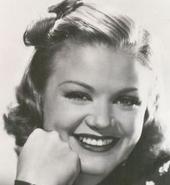Simone Simon was born April 23, 1910 to a French engineer and an Italian housewife in Marseille. Her complete birth name was Simone Thérèse Fernande Simon. Her parents' marriage didn't last very long after her birth, for at the age of three Simon moved to Madagascar, where her mother's new husband managed a graphite mine. She spent her formative years there and in Marseilles, and later attended schools in Berlin, Budapest, and Turin. In 1931 she went to Paris and worked briefly as a singer, model and fashion designer.As the story goes, in 1931 the 21-year-old Simon was drinking coffee on the terrace of the Café de la Paix in Paris when she was discovered by exiled Russian director Victor Tourjansky, who cast her in “Le Chanteur inconnu†(“The Unknown Singer†1931), starring opera singer Lucien Muratore. By the time Tourjansky and Simon worked together again, in “Les Yeux noirs†(“Dark Eyesâ€) in 1935, Simon had already established herself as a popular young player in the French film industry. After seeing her in the 1934 film “Lac Aux Dames†(“Ladies' Lakeâ€), Darryl F. Zanuck brought her to Hollywood in 1936 with a widespread publicity campaign.Publicity dubbed her "La Sauvage Tendre," a label that must have appealed to 20th Century-Fox talent scouts. Fox mogul Darryl F. Zanuck had Simon shipped to Hollywood—billed as "Europe's Sweetheart"—to star in a series of films for the studio. The Fox publicity department taught Americans to pronounce her name "See-moan See-moan," but the studio was having problems getting the Tender Savage to speak proper English.However her films for 20th Century Fox were only moderately successful. She lost the role of Cigarette in “Under Two Flags†(1936) to Claudette Colbert, and found herself cast instead in smaller productions such as “Girls' Dormitory†(1936), competing with Ruth Chatterton for the attentions of Herbert Marshall; “Ladies in Love†(1936), fourth-billed after Janet Gaynor, Loretta Young, and Constance Bennett; and “Seventh Heaven†(1937) with James Stewart. Simon returned, dissatisfied, to France. There she appeared with Jean Gabin in Jean Renoir’s “La Bête Humaine†(“The Human Beastâ€) in 1938.With the outbreak of World War II she returned to Hollywood to work for William Dieterle, at RKO, to play one of the tormentors in the comedic “The Devil and Daniel Webster†(1941). That was followed with the Tourneur/Lewton “Cat People†(1942). While with RKO she made two more films for Lewton, “The curse of the Cat People†(1944) and “Mademoiselle Fifi†(1944). These films, however, did not lead to greater success and she languished in mediocre films until the end of the war. After the defeat of the Germans, she returned to France and worked in 11 films, , including “La ronde†(1950) of Max Ophüls. Following the British comedy “The Extra Day†in 1956, Simon retired from films but continued working onstage. In 1973, she made a brief comeback in Michel Deville's “La Femme en bleu†(“The Woman in Blueâ€), her final film.She lived in Montmartre of Paris until her death on February 22, 2005. French Minister of Culture Renaud Donnedieu de Vabres issued a statement after her death in which he extolled Simon's "charm, her irresistible smile... With Simone Simon's passing, we have lost one of the most seductive and most brilliant stars of the French cinema of the first half of the 20th century."
